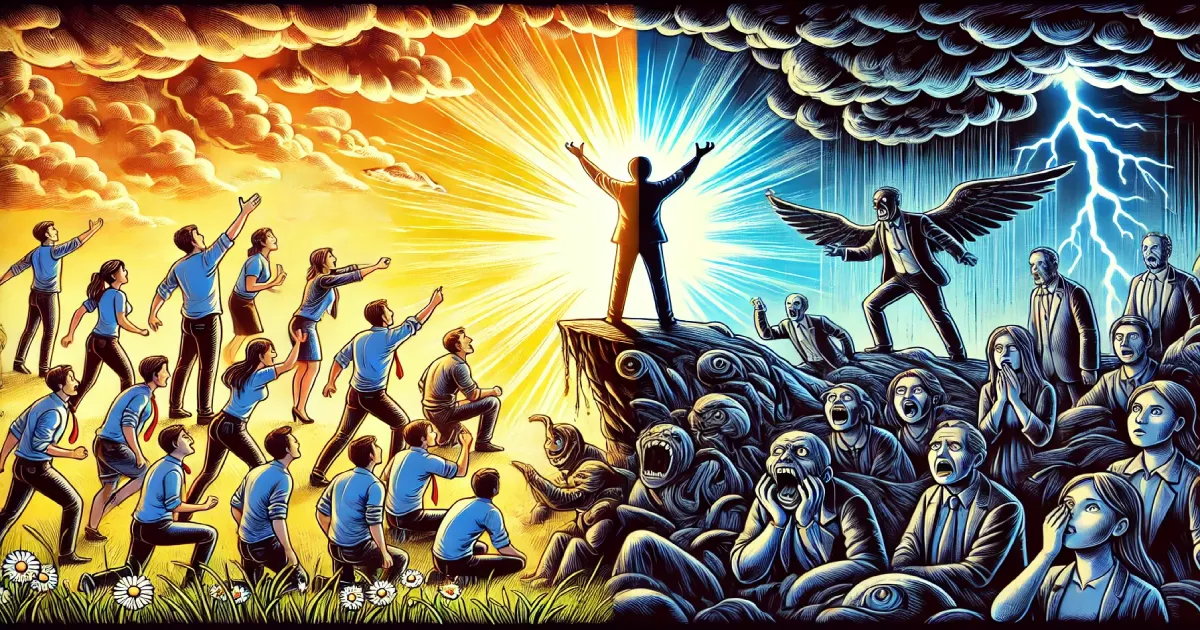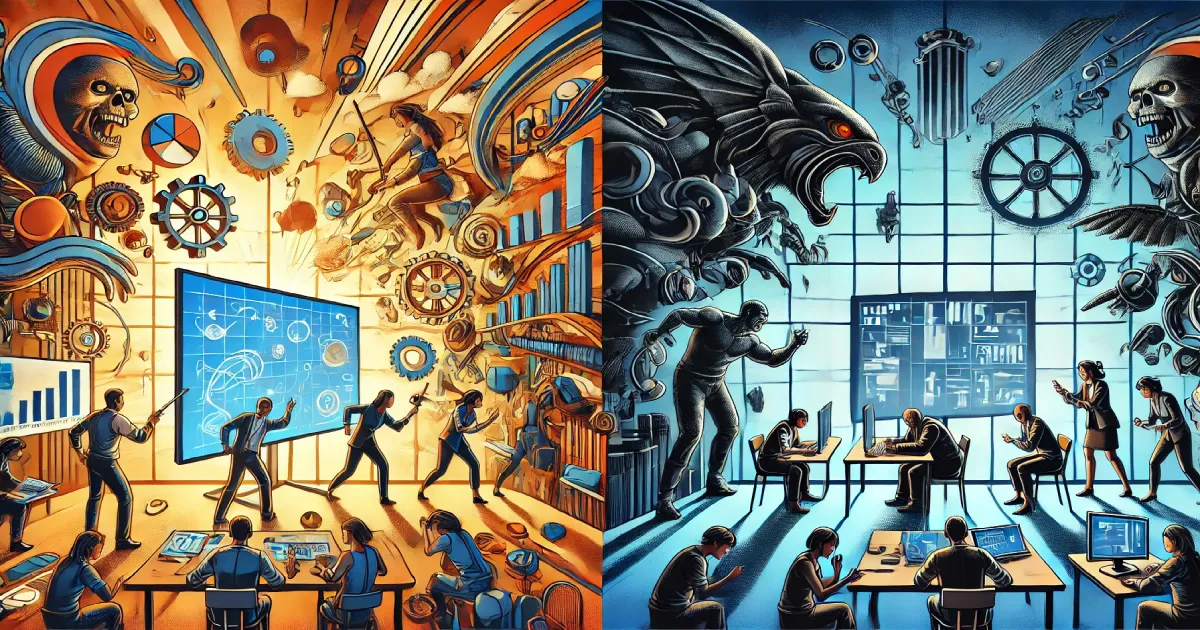5 Differences Between Good Leaders and Bad Managers

Leadership and management are often used interchangeably, but they encompass different qualities and roles within an organization. Understanding the distinctions between good leaders and bad managers is crucial for the success and well-being of any business.
Good leaders inspire, motivate, and drive teams toward success, while bad managers can hinder progress and create a toxic work environment. Here are 5 key differences that set good leaders apart from bad managers.
Difference 1) Vision vs. Micromanagement

Good Leaders: Visionaries
Good leaders have a clear vision of where they want to take their organization. They focus on long-term goals and create a roadmap to achieve them. These leaders inspire their team by sharing their vision and encouraging everyone to work together towards common objectives. They understand the importance of innovation and are not afraid to take calculated risks to move the organization forward.
For example, Steve Jobs was known for his visionary leadership at Apple. He had a clear vision of what he wanted the company to achieve and inspired his team to think differently and innovate constantly.
Bad Managers: Micromanagers
In contrast, bad managers tend to focus on the minute details of daily operations, often to the detriment of the bigger picture. They have a tendency to micromanage, which can stifle creativity and innovation among team members. By focusing excessively on minor tasks and controlling every aspect of the workflow, bad managers can create a stressful work environment and demotivate employees.
Micromanagement often leads to a lack of trust and autonomy, causing team members to feel undervalued and less engaged in their work. This approach can result in high turnover rates and decreased productivity.
Difference 2) Empowerment vs. Control

Good Leaders: Empowering Their Teams
Good leaders understand the importance of empowering their teams. They delegate tasks appropriately and trust their team members to take ownership of their work. By providing the necessary resources, support, and autonomy, good leaders enable their teams to perform at their best and develop their skills.
Empowerment fosters a sense of responsibility and accountability, leading to higher job satisfaction and improved performance. Employees who feel empowered are more likely to take initiative, contribute innovative ideas, and go the extra mile to achieve organizational goals.
Bad Managers: Controlling and Overbearing
Bad managers, on the other hand, often rely on control to get things done. They may be overbearing and unwilling to delegate tasks, preferring to keep all decision-making power to themselves. This approach can lead to a lack of trust and resentment among team members, who may feel stifled and unable to contribute meaningfully.
Overly controlling managers can create a toxic work environment where employees are afraid to make mistakes or take risks. This can hinder creativity, innovation, and overall team morale.
Difference 3) Communication vs. Dictation

Good Leaders: Effective Communicators
Good leaders excel in communication. They actively listen to their team members, provide constructive feedback, and encourage open dialogue. By creating a culture of transparency and open communication, good leaders ensure that everyone is on the same page and working towards common goals.
Effective communication also involves recognizing and addressing any issues or concerns within the team promptly. Good leaders are approachable and create an environment where employees feel comfortable voicing their opinions and suggestions.
For instance, Satya Nadella, CEO of Microsoft, is known for his open and empathetic communication style. He transformed Microsoft's culture by promoting collaboration and inclusivity.
Bad Managers: Dictators
In contrast, bad managers tend to dictate rather than communicate. They may issue orders without providing context or seeking input from their team members. This top-down approach can lead to misunderstandings, misalignment, and a lack of engagement among employees.
Dictatorial managers often fail to recognize the value of their team's insights and contributions. This can result in missed opportunities for improvement and innovation, as well as decreased morale and job satisfaction.
Difference 4) Inspiration vs. Fear

Good Leaders: Inspiring and Motivating
Good leaders inspire and motivate their teams by setting a positive example and recognizing the achievements of their team members. They understand the importance of creating a positive work environment where employees feel valued and appreciated.
By celebrating successes and providing opportunities for growth and development, good leaders create a culture of motivation and enthusiasm. They encourage their teams to strive for excellence and support them in overcoming challenges.
For example, Richard Branson, founder of the Virgin Group, is known for his charismatic and inspirational leadership style. He emphasizes the importance of having fun at work and empowering employees to pursue their passions.
Bad Managers: Leading by Fear
Bad managers, on the other hand, often resort to fear and intimidation to get results. They may use threats, punishment, or negative reinforcement to push their team members to perform. This approach can create a toxic work environment where employees feel anxious and demotivated.
Leading by fear can result in high levels of stress and burnout among employees, leading to decreased productivity and high turnover rates. It also stifles creativity and innovation, as employees may be afraid to take risks or suggest new ideas.
Difference 5) Adaptability vs. Rigidity

Good Leaders: Adaptable and Flexible
Good leaders are adaptable and open to change. They understand that the business world is constantly evolving and are willing to adjust their strategies and approaches accordingly. By staying flexible and embracing change, good leaders can navigate challenges and seize new opportunities.
Adaptable leaders also encourage their teams to be innovative and agile. They create an environment where experimentation and learning from failure are valued, fostering a culture of continuous improvement.
For instance, Jeff Bezos, founder of Amazon, is known for his willingness to experiment and adapt. His leadership has driven Amazon's continuous growth and innovation.
Bad Managers: Rigid and Inflexible
In contrast, bad managers tend to be rigid and resistant to change. They may stick to outdated practices and processes, even when they are no longer effective. This inflexibility can hinder the organization's ability to adapt to new challenges and opportunities.
Rigid managers often create a culture of stagnation, where employees are discouraged from thinking outside the box or challenging the status quo. This can lead to decreased innovation and a lack of competitiveness in the market.
Final Thoughts
The differences between good leaders and bad managers can have a profound impact on the success and well-being of an organization. Good leaders inspire, empower, communicate effectively, motivate, and adapt to change. They create a positive and dynamic work environment where employees feel valued and engaged.
On the other hand, bad managers rely on micromanagement, control, dictation, fear, and rigidity. Their approach can lead to a toxic work environment, decreased morale, and hindered innovation.
By understanding and embodying the qualities of good leadership, individuals can drive their organizations towards long-term success and create a positive impact on their teams and stakeholders.
Key Takeaways
| Key Differences | Good Leaders | Bad Managers |
|---|---|---|
| 1. Vision | Focus on long-term goals | Focus on minor details |
| 2. Empowerment | Trust and delegate | Control and micromanage |
| 3. Communication | Encourage open dialogue | Dictate orders |
| 4. Inspiration | Motivate positively | Lead by fear |
| 5. Adaptability | Embrace change | Resist change |





